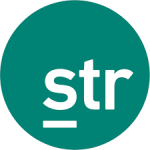U.S. hotel occupancy leaders and laggards in this mid-November 2022 “bubble” chart update reflect anticipated seasonal shifts, the continued return of corporate and group demand in large-to-medium sized markets, and a persistent impact from Hurricane Ian. Additionally, the Top 25 Markets mostly trailed 2019 occupancy levels whereas a solid majority of markets outside of the Top 25 were ahead of the pre-pandemic comparable.
Among those Top 25 Markets, New York City continued its firm hold as autumn’s top occupancy market at a level of 84.7% for the four weeks ending 12 November—a small gain from the previous four weeks. In second position, a normal seasonal shift in demand led to Phoenix’s average occupancy surging 6.0 percentage points to 77.9%. Those two markets were followed by Boston (77.7%, -3.9 pts. Month over month), Nashville (76.6%, -2.7 pts.) and Orlando (75.9%, +3.5 pts.). Despite its strong relative position, demand in New York City was still down by 7% from to the matched period in 2019. In contrast, Nashville’s comparable four-week demand rose 16% from 2019, but that gain was more than offset by Music City’s 17% comparable increase in room supply.
Occupancy in the largest U.S. markets remains largely below 2019 levels. Further, only four of the Top 25 Markets had a higher matched-period occupancy in the four-week window. For comparison, 91 of 140 (65%) remaining STR-defined markets outperformed their same-period occupancy from 2019.
On a revenue-per-available-room (RevPAR) basis, which combines the impacts of occupancy and average daily rate (ADR), two of the five large market occupancy leaders exceeded their 2019 level after accounting for inflation. Phoenix indexed at 111 (or 11% above the 2019 RevPAR) for the four weeks, with Orlando indexing at 104. Notable large market deficits in real RevPAR indices occurred in Minneapolis (80), St. Louis (87) New York City (96).
Outside of the Top 25 Markets, two Florida areas which were most impacted by Hurricane Ian—Fort Myers (83.4%) and Sarasota (81.3%)—took the first and second positions in occupancy. Those markets were followed by Austin (78.6) which hosted Formula 1 races and two citywide conventions over the period. Next on the leaderboard was Hawaii/Kauai Islands (77.6%) and Savannah, GA (77.1%).
One compelling story within this recent data is the contrast in how the two Florida markets arrived at their four-week occupancy positions. Fort Myers took a devastating hit from Hurricane Ian, which made landfall on 28 September. In the last four weeks of data, area room demand was down by 9% against 2019; however, the market’s loss of 75 hotels (5,500 rooms) through both temporary and permanent closures severely constricted its available room supply and subsequently raised occupancy. The near-by Sarasota market experienced only light storm damage (with a single standing temporary hotel closure) but grew its four-week room demand 42% above the 2019 comps, which reflects the temporary influx of relief/construction workers, insurance agents, and displaced regional residents.
For more information, be sure to check out our weekly updates in STR’s Market Recovery Monitor.
If you are interested in accessing the data behind this visual via our hospitality platform in CoStar, please contact us at If you are interested in accessing the data behind this visual via our hospitality platform in CoStar, please contact us at [email protected].




